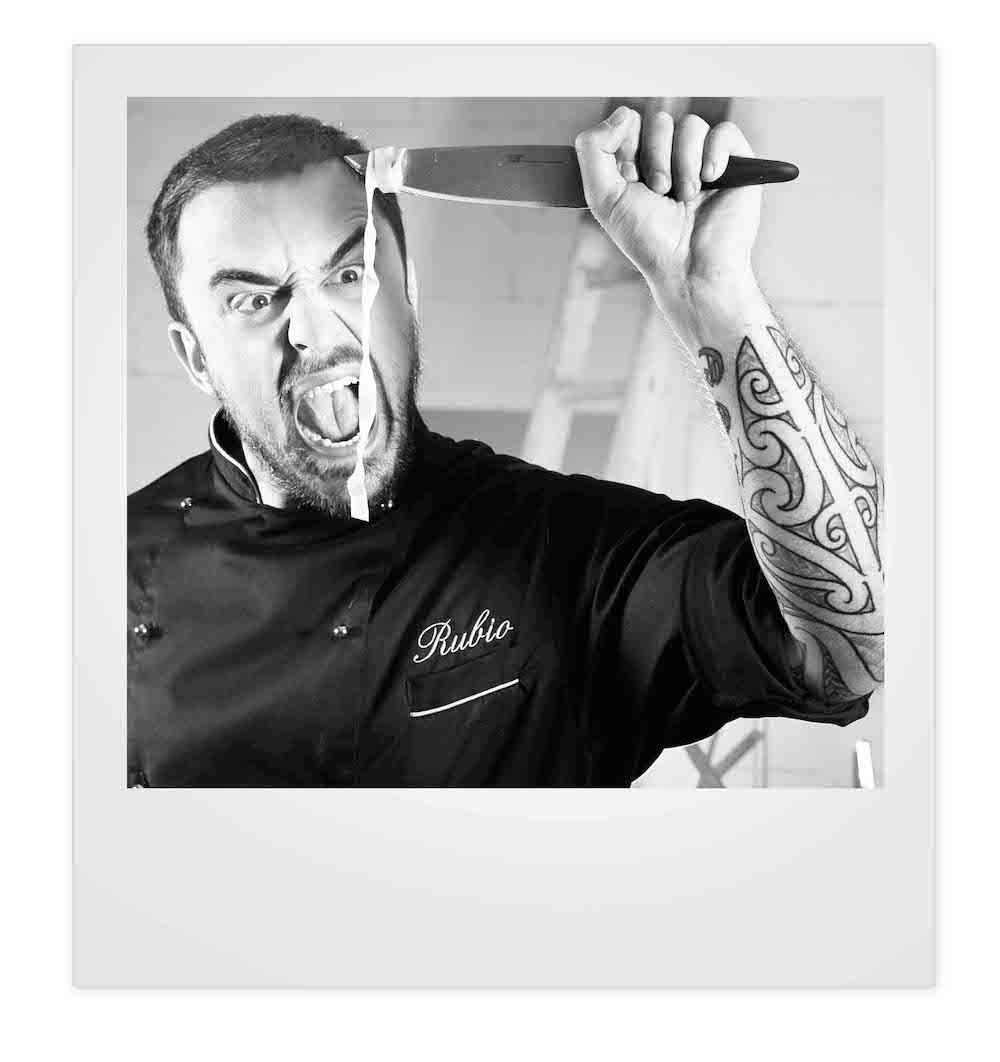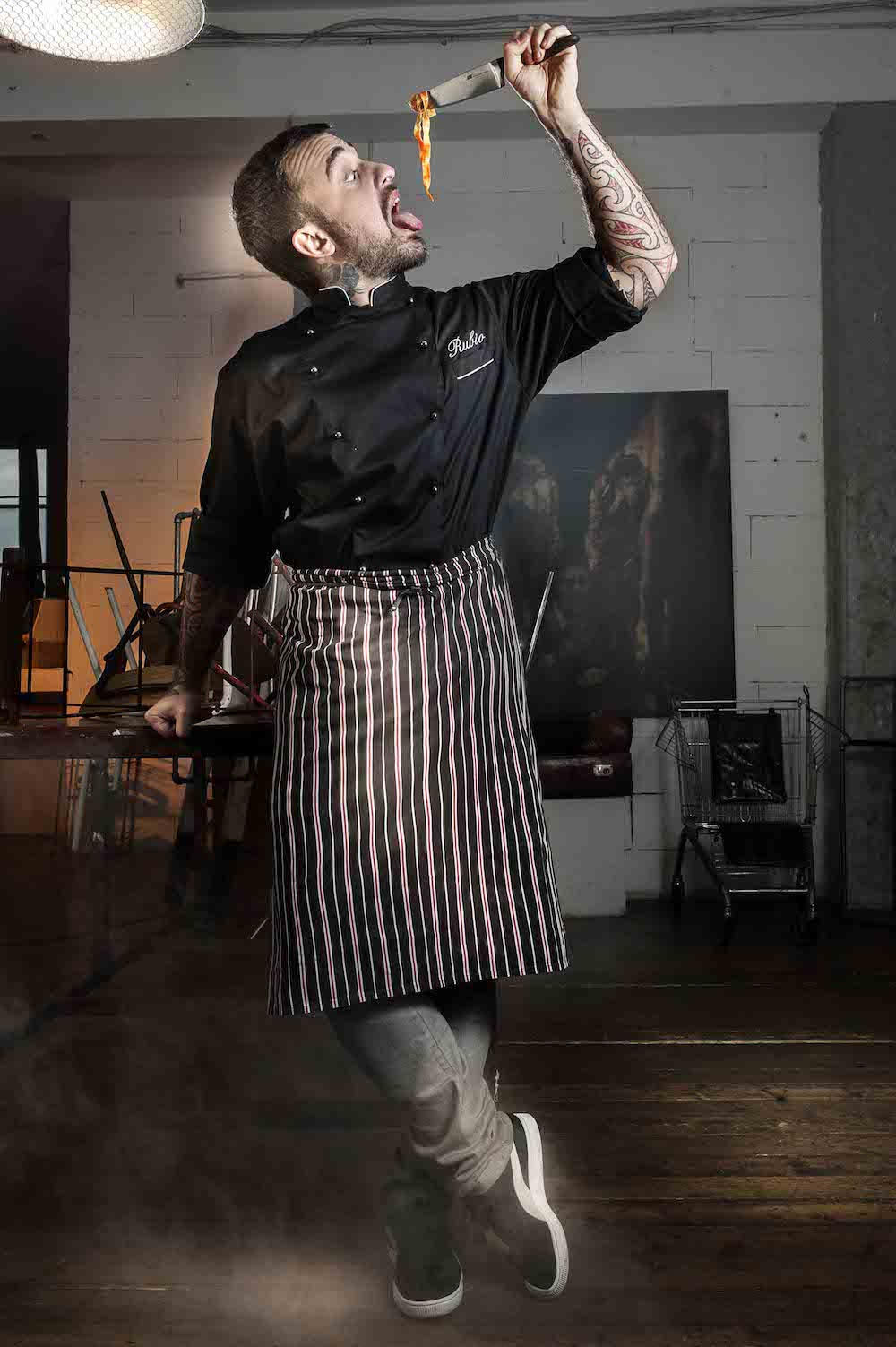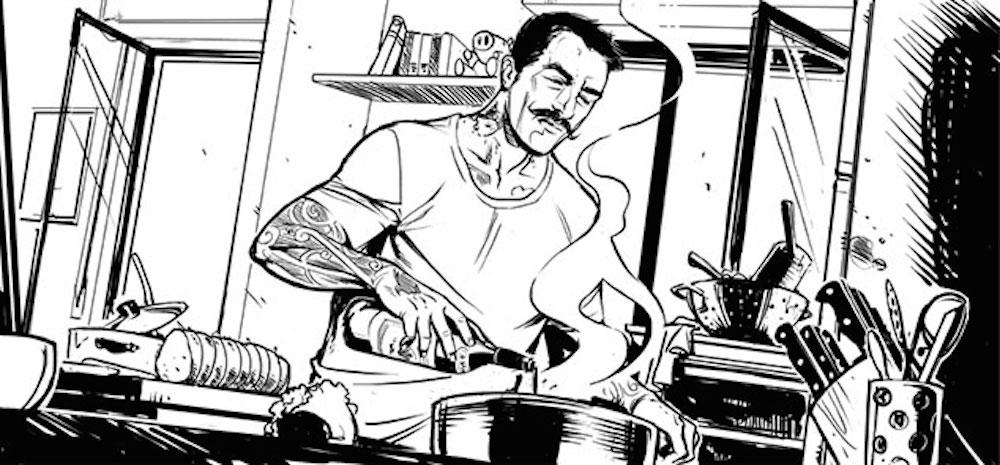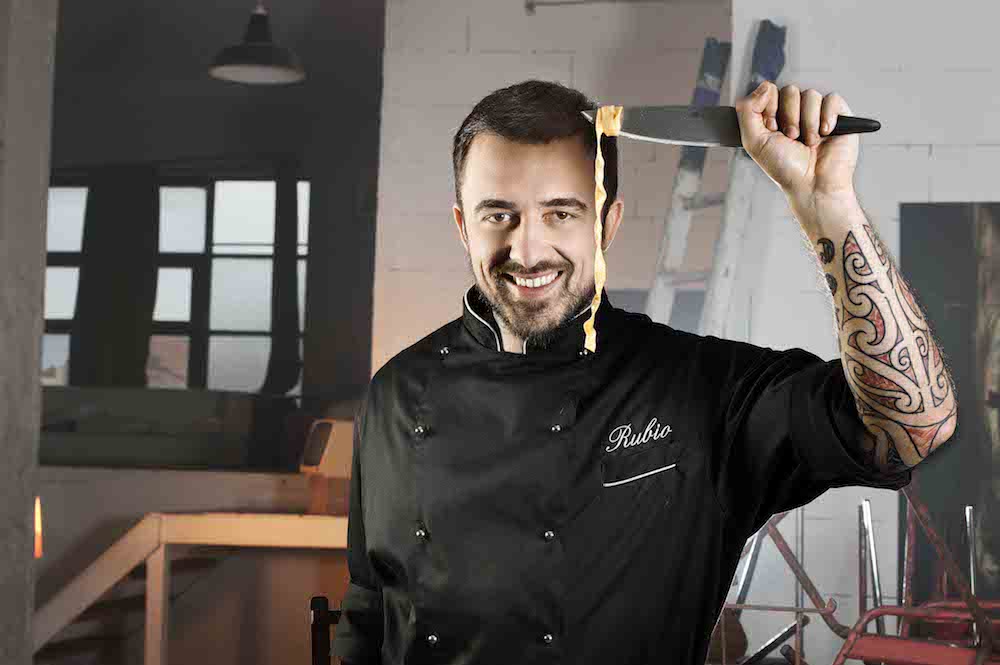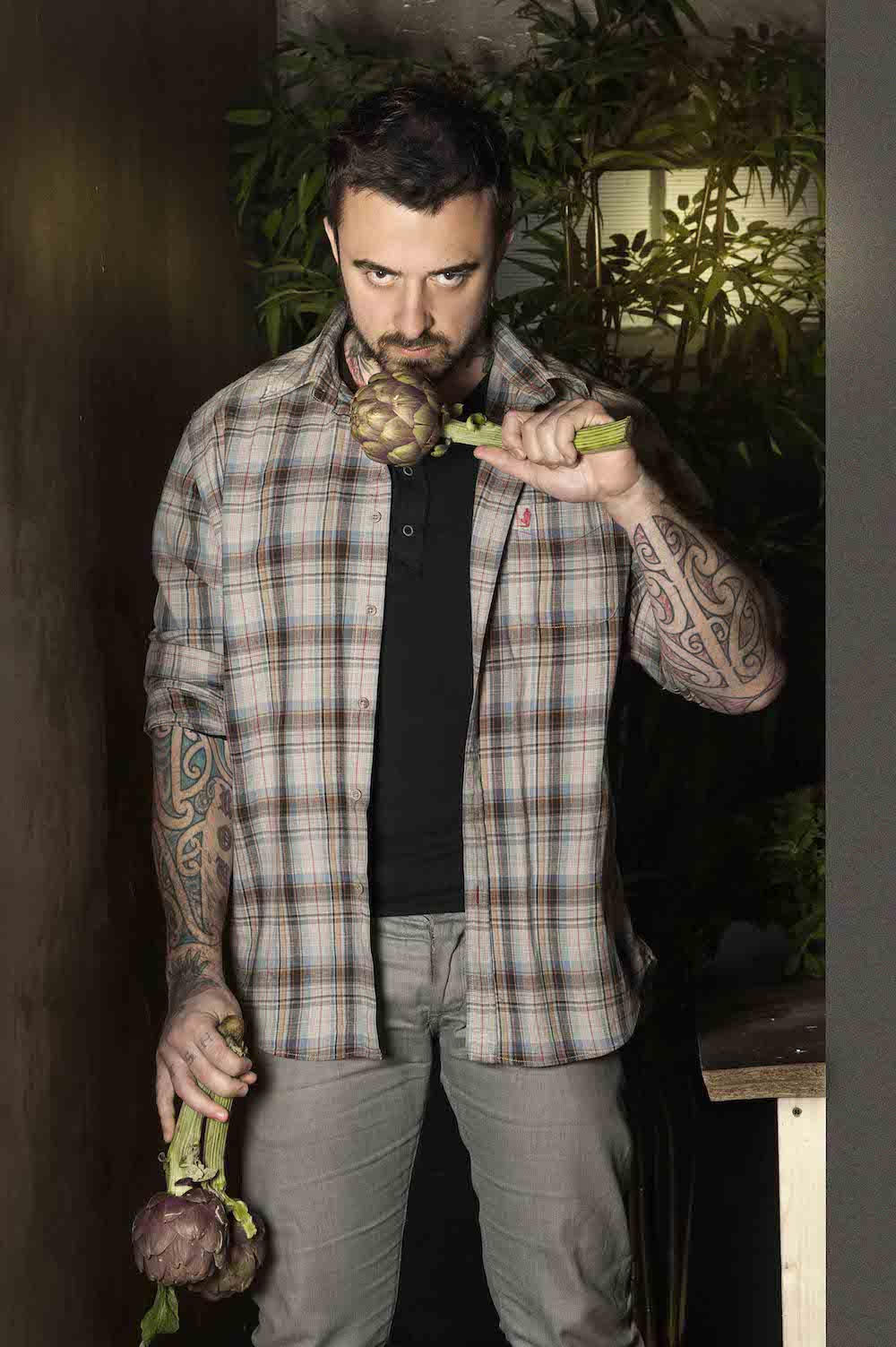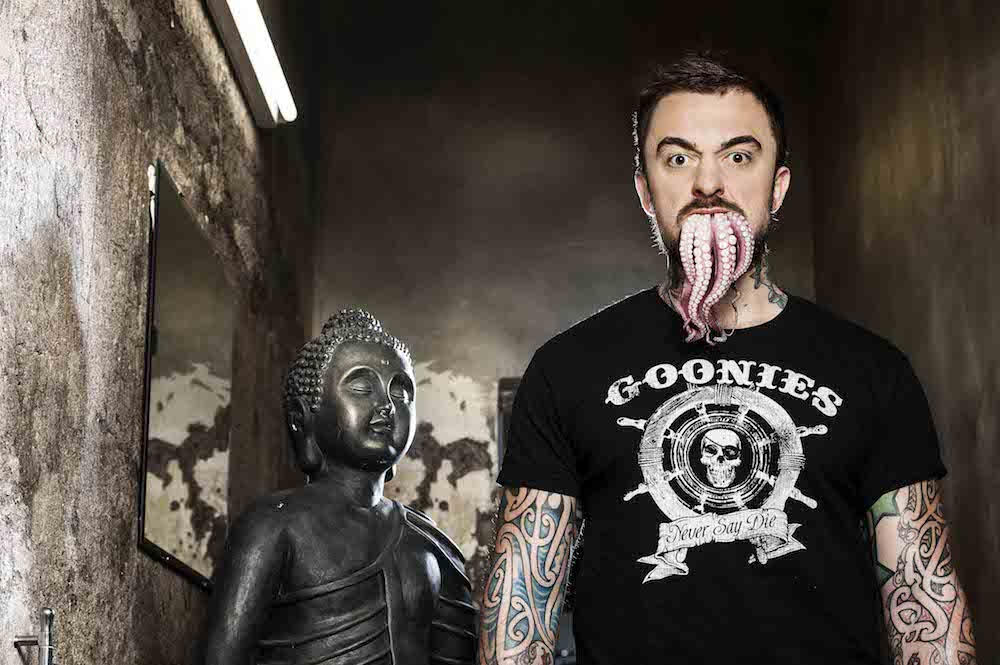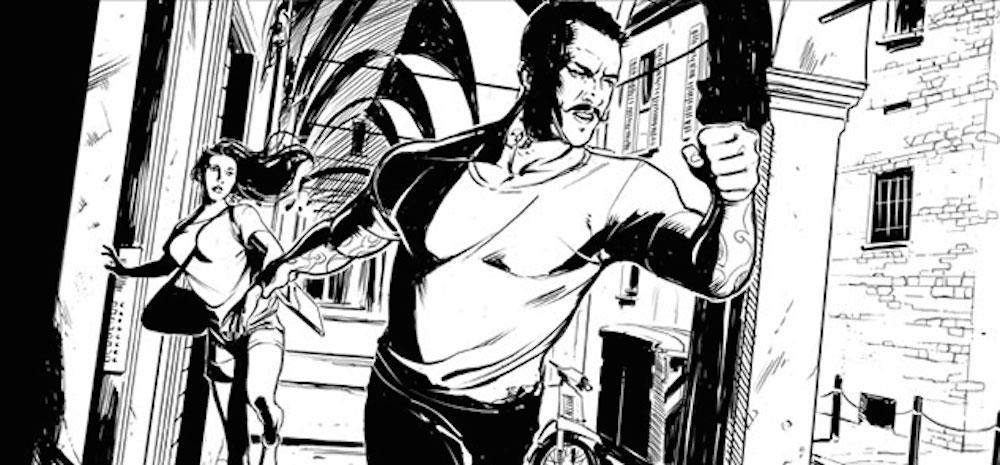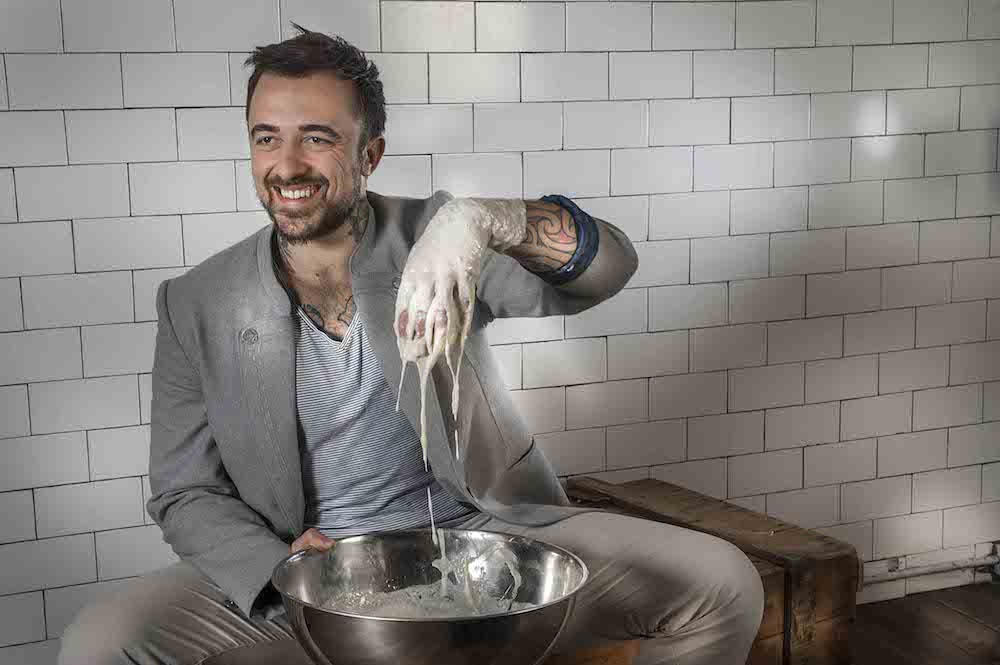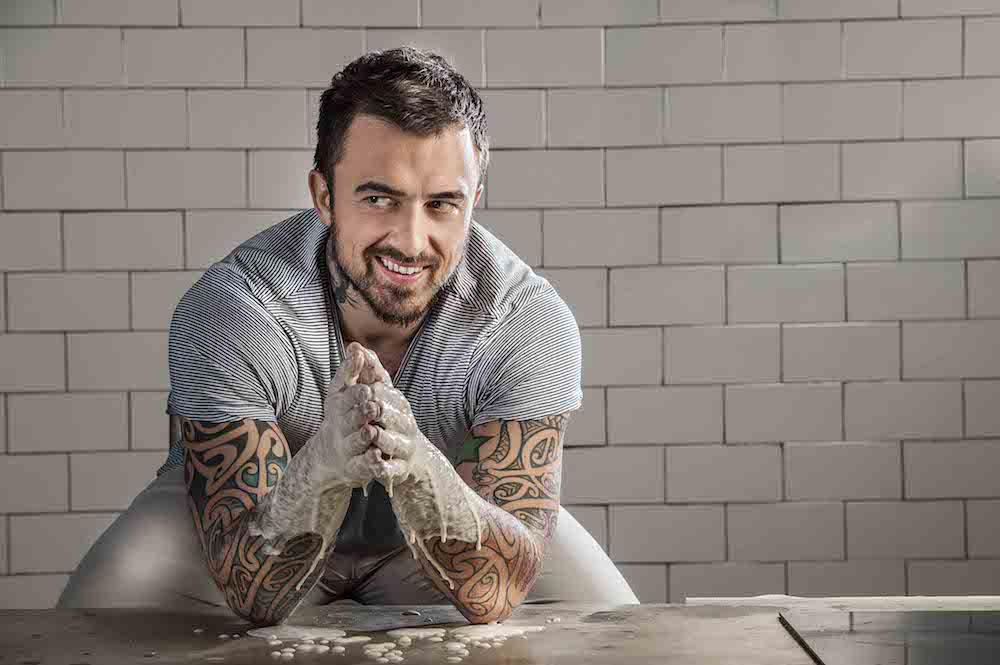Oriental background music (video at right), ex rugby-player, extreme spontaneity, tattoos – made by his second father Tom Downs, his friends Paul Alfonsi and Chiara Sorolli of Nina Tatoo and Marla Singer of Moko Tatoo – and a lot of street food. This the identikit in pills of Rubio (Gabriele Rubini), the italian chef out of the chorus. We interviewed him to understand if and how design (or not) deals with the food ‘on the road’. But, as sometimes happens speaking with people full of curiosity, we ended up talking about the real substance (of the food and its social function). For those who don’t know, Chef Rubio has established himself on the small screen with the format ‘Unti e Bisunti ‘, a TV series dedicated to the street-food first aired in June 2013 on DMAX (52 of digital terrestrial channel). Thanks to this program, and very quickly, Rubio imposes itself to the attention of the general public by breaking all rules: no more starred chefs. The chef/Rugby player – his last sport experience was with Lazio Rugby team – runs the Italy discovering the flavours and local gastronomic traditions, then challenge a local restaurateur on his cult-dish. Read the interview below while listening to the oriental music track that follows all his programs.
Chef, what does design mean for you?
The design for me is primarily simplification and logistics. Accompanied by eye-catching aesthetics. I love the fact you leave the food in centre stage, cloth as much as possible, or at best you can, to its original form. The design must be a discreet presence and support.
In street food, design also means packaging.
With regard to the packaging, or more generally how to serve food, when I work I want to make sure that it gets to the mouth in the easiest way possible. Goal number one: don’t break it or destroy it. I hope that in the future there is more collaboration between chefs and designers, cooks and doctors, cooks and everyone else. In the end, the food is life and we all have to deal with food. Everybody would benefit from a bigger collaboration and we could do lots of things that would make life better.
What is the responsibility of designers in the relationship with food?
We need to work harder on the public at large. The difficulty of the design is to be communicated to the consumer farer to these expressions of art. The general public sees an innovative pack and, even before assessing its efficiency, think it’s another creative nonsense wriggle. They see it as a threat. We need to communicate the design in deep, involving more ordinary people.
When is design useful?
The design, if used with intelligence, is useful. Just think of the scope of humanitarian aid. Think for example about the revolution that would trigger if you could serve in a practical way, at a distance, maybe through an airplane, a dish that is not only white rice or desserts in a vacuum. The way to do so should be an innovative packaging technology, cheap. Just design.
Functionality first of all… But then?
Of course there are some objects that make you smile… those things that are not necessary but they look like a genius. But about the food, on the other hand, you can’t fool around. The must is the functionality, because it is something that makes a human being survive, that makes him feel better. We can also play with food design, but always thinking to its functionality.
In street food, how is the studio behind the packaging?
Studies on packaging exist since the first transportable food has been invented. First feature: not to get burnt, not dirty, eat while walking, share. The first intuition was genial, then development (or involution) of the society brought designers to solve new problems. The design is by definition bound to progress and must meet the needs of the historical moment.
Any examples?
Let’s think of the earthquake of L’Aquila. The solution to the lack of real kitchens has been skewered on ‘canaletto’. The one which was before a simple highlight abruzzese cuisine dish, is now a desperate need. The concept is a bit like a grid, without the use of gas, but being concave, it allows the skewer grilling without touch the fire. After the earthquake, these tools have become very popular because they are a valid substitute to the kitchen. In that moment designers has engineered and people invented new formats. Thanks to the design and then, in spite of the disaster, design has managed to find a solution. Other examples of evolution in food packaging are the boxes of Chinese of Thai cuisines, which originally were covered both above and below, now have evolved into baskets with interlocking tabs to preserve moisture and heat, preventing the food from escaping. Sometimes by an intuition like this you can solve a problem and make a product more usable, letting the culture of food circulate more.
How is your home?
I travel a lot, so I don’t have a real home. Before I was living in a condoned washtub, minimal: mattress on the floor, vivid light, wood and glass. I love northern houses and no-frills.
And if you weren’t a chef?
I’d like to work as photographer or video maker. I like the fact what I see can be available to anyone. Think of those friends who cannot travel…
A cult object (watch the video on the top)?
Chopsticks. I have a perversion, since when I was young, even when I was at home with my parents I used to eat using chopsticks. I always found them most functional then forks to pick up small pieces, such as vegetables and fruits. Smaller meals can more easily captured by chopsticks, which allow you to take all the time needed to savor anything. They are more delicate. My parents treated me like I was crazy, but chopsticks are one thing I am very close to and I particularly love. They ensure the proper distance between your mouth and the food. If there’s something the chef wants to present you somehow, you have to get it in the mouth with that form, without destroying it. I find chopsticks an elegant tool.
Marco Magalini & Chef Rubio speaking

-
2

